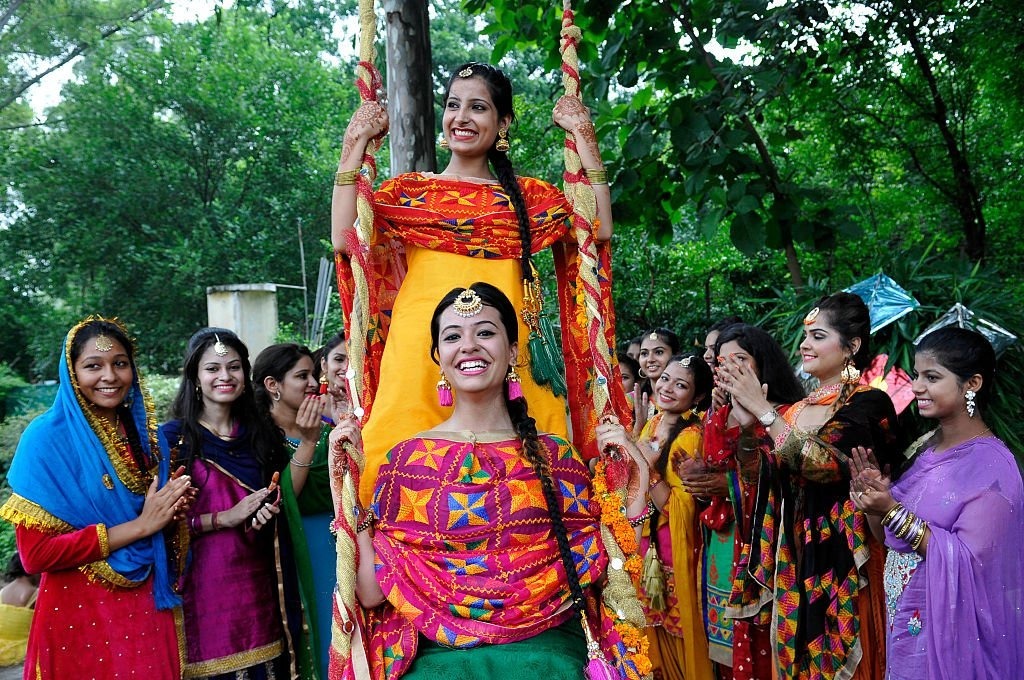Celebrate Teej—Nepal’s Grand Festival of Women’s Devotion, Dance, and Sisterhood
Teej, known as Nepal’s iconic women’s festival, transforms the nation every August and September into a tapestry of red saris, joyful music, and deep devotion. It honors Goddess Parvati, the strength of womanhood, and the enduring sacred bond between wives and husbands. As thousands of women fast, gather, and sing, Teej bridges religious tradition, social empowerment, and pure celebration.

Why Teej Is a Festival of Celebration and Connection
Devotion, Empowerment, and Joyful Togetherness
Teej festival Nepal offers unique rituals that both empower and unite women across communities. Its rituals carry deep meanings—prayers for happy marriages, strength during adversity, and celebration of individual beauty and community spirit.
- Bonding with sisters, mothers, daughters, friends through gatherings, singing, and storytelling.
- Praying for marital bliss, longevity of husbands, and wishing for a perfect match for unmarried women.
- Personal empowerment as women advocate for social change, justice, and equality through Teej songs.
- Fasting rituals that embody self-discipline, devotion, and spiritual purification.
3-Day Festival
Of rituals and fasting
1 million+
Women participate nationally
30,000+
Gather at Pashupatinath
Teej—Nepal’s Ancient Festival of Women’s Devotion
Myth, Meaning, and Rituals
Haritalika Teej is rooted in Hindu mythology—telling the story of Goddess Parvati’s devotion and union with Lord Shiva. Nepalese women and girls gather for three days to cleanse body and soul, wish for marital bliss, and celebrate the joys and challenges of womanhood. Teej is both a time for spiritual reflection and a festival of aesthetics: women wear red saris, gold jewelry, bangles, and intricate mehendi designs.
Day One (Dar Khane Din) initiates gatherings, where families reunite for feasting, singing, and dancing. Day Two is the main fasting day, where married women abstain from food and water—with prayers at temples, most famously Pashupatinath in Kathmandu. Day Three (Rishi Panchami) marks purification, worshipping sages, with ritual bathing and prayers for forgiveness.


Key Features and Rituals of Teej Festival


Teej’s Most Cherished Traditions and Customs
Nepal’s Teej festival thrives on age-old practices:
- Fasting and prayer for marital harmony and family well-being.
- Adorning oneself in red—the hue of devotion, passion, and strength.
- Mehendi ceremony, where hands are decorated with elaborate designs.
- Singing folk Teej songs—expressing love, hope, pain, resilience, and solidarity.
- Dancing on the streets, at home gatherings, and temple courtyards.
❤
Red sarees and bracelets
✿
Intricate mehendi art
🍪
Traditional sweets and feasts
✨
Blessings exchanged between generations
The Spirit of Teej—A Day in the Life
Morning sees brightly dressed women visiting temples and homes, fasting, praying, and exchanging stories. The midday hours become a celebration of music, dance, and shared memories. Meals are skipped by fasting women, but the spirit is high; the joy of collective prayer and song makes Teej a festival of resilience.

Teej in Kathmandu Valley—Sacred, Social, and Unforgettable
From Temples to Homes, a Wave of Celebration
Nepal’s Teej festival reaches its energetic peak at Pashupatinath Temple, where thousands gather for prayer, blessings, and socializing. Elsewhere, city parks, squares, and rural homes fill with song and laughter, breaking social barriers as women of different backgrounds join together.
Teej’s beauty is also in storytelling—songs pass down tales of Goddess Parvati’s devotion, women’s struggles for justice, and hope for a better future. The festival has become a platform for social issues, women’s rights speeches, and charity drives for underprivileged communities.
Teej foods like sel roti, fruits, and sweets are gifts exchanged as tokens of love and friendship. The aesthetic of red—embroidered saris, bangles, even umbrellas—creates a visual celebration representing the goddess herself.
Modern Teej:
Includes workshops, fashion shows, and social media campaigns celebrating women’s achievements.
Global Welcome:
Non-Hindu and international participants are welcome, reflecting Nepal's openness and hospitality.
Vibrant Tourism:
Photographers and tourists flock to Kathmandu, Pokhara, and Chitwan for vibrant scenes and personal stories.
Be Part of Nepal’s Festival of Women—Teej Awaits You
Join in Teej 2025, don red, share your voice, and celebrate women’s empowerment, spiritual purpose, and joy. Whether praying at temple steps, dancing on dusty streets, or singing with friends—Teej offers a journey of devotion and solidarity.
Discover Teej—Nepal’s Icon of Women’s Celebration

Quick Guide—How to Experience Teej Festival
Make the most of Teej with these essential tips and highlights:
- Wear traditional red attire
- Join temple prayers at Pashupatinath
- Try Teej sweets and feasts (on Dar Khane Din)
- Watch or join folk dances
- Apply mehendi with friends
- Celebrate with music and charity
- Visit major Teej events in Kathmandu, Pokhara, Chitwan
Teej Festival FAQs
Get answers to the most common questions about Teej and how you can join the celebration.

